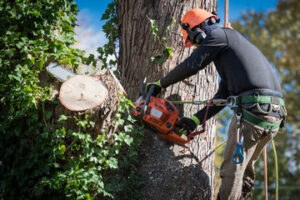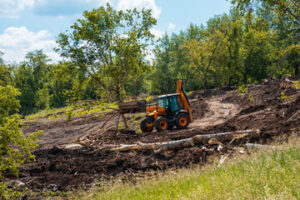Mobile detailing is a great option for car owners who value convenience. These professionals offer a complete cleaning service, including paint correction and interior restoration, without the hassle of going to a car wash.

They use specialized products to break down harsh contaminants and steam clean hard-to-reach areas. This allows them to achieve a showroom-quality finish in less time. Visit Website to learn more.
The emergence of mobile detailing services reflects the modern demand for convenience and sustainability. Mobile detailing companies offer a full range of auto detailing services at customers’ homes or work sites. They use advanced technology to streamline operational tasks, such as scheduling and client communication. Mobile apps also make it easier for clients to book appointments and receive reminders. These tools help reduce paperwork and eliminate the need for paper checklists, which reduces waste. They can even help automate routine tasks, such as inventory management and capturing before-and-after photos of vehicles.
Many of today’s best auto detailing products are made with non-toxic, biodegradable ingredients that are safer for the environment and your health. They also minimize water usage and prevent harmful chemical runoff. This means fewer pollutants in the air and a healthier ecosystem for everyone. Additionally, eco-friendly auto detailing products are often concentrated and require only a small amount to achieve high-quality results. They also require less energy to produce than traditional cleaning products, which makes them cost-effective.
Aside from reducing the environmental impact of your car, green detailing techniques can help improve its resale value. Dirt and debris can scratch paint and cause rust, but detailing services protect the surface with clear coats of protective wax and polymers. These coatings not only protect the paint but also enhance the vehicle’s visual appeal. In addition, regular auto detailing can reduce allergens and bacteria in the interior, which can affect your health.
Mobile detailers can further minimize their environmental footprint by using energy-efficient equipment, such as water-saving nozzles and low-flow steam cleaners. They may also harvest rainwater or explore recycling and composting options for wastewater and cleaning residues. In addition, they may use onboard generators to power their machinery, which cuts down on energy consumption.
When choosing a mobile detailer, look for one with certifications and practices that reflect its commitment to the environment. Checking reviews and testimonials can help you find a service that prioritizes the planet as much as it does your car. Look for a company that uses recycled or biodegradable materials and implements waste reduction strategies, such as reusable cloths and packaging.
Convenient
When choosing a mobile detailing service, look for one that offers convenience and quality. Most offer a variety of services that can be tailored to suit your needs. This includes ceramic coatings, paint correction, and more. They also have flexible scheduling options, so you can fit your car detailing services into your busy schedule without the hassle of visiting a traditional auto-detailing shop.
In addition to a wide range of services, convenient mobile detailers often provide educational content and transparency about their pricing. This can help to build trust with customers and increase brand awareness. Additionally, many mobile detailers bring their own water and electricity to avoid relying on the client’s power supply. Others use battery-powered tools, which are ideal for small spaces and tight corners.
Convenient detailing services are a great option for car enthusiasts who want to keep their cars looking pristine and in excellent condition. These services can also be a lifesaver for elderly individuals who may have mobility issues or prefer not to travel long distances.
Regular car detailing is important for more than aesthetics; it can also protect your vehicle from the elements and extend its lifespan. A professional detailing service will ensure that your vehicle looks and functions as new as possible for as long as you own it. In addition, regular cleanings can prevent costly repairs in the future and help you maintain a high resale value.
A thorough and professional mobile auto-detailing service can make your car look new again and reduce the risk of mechanical problems. It’s important to choose a reliable and experienced mobile detailer, however. It’s also a good idea to check their reputation and customer reviews before hiring them. Lastly, be sure to ask about their experience and the products they use. The best mobile auto detailing companies will be able to answer your questions with confidence and provide the highest-quality service.
Tailor-made
Unlike fixed locations, which can be impersonal, Mobile Detailers tailor their services to each client. The result is a detailed car that looks and feels like it has been cared for. Whether it’s washing, clay baring, or headlight restoration, the service is precision-driven and meticulous. This attention to detail sets apart the service from traditional car washes and makes it a smart investment for anyone who cares about their vehicle.
Some mobile detailing services offer additional perks for their clients, such as oil changes and pet-friendly products. These extras give your vehicle a complete makeover, while also increasing its value and making it more attractive to potential buyers. Additionally, many mobile car detailing businesses use environmentally friendly cleaning agents that are free from harsh chemicals. This reduces the amount of runoff, which prevents polluting local waterways.
Mobile detailing companies offer a variety of services, including paint correction, ceramic coating, waxing, and polishing. They use advanced techniques and high-quality products to achieve a flawless finish on the interior and exterior of vehicles. They also use steam cleaning to sanitize the interiors and kill germs and bacteria. Additionally, they use battery-powered tools to work on vehicles without access to electricity. This allows them to work in tight spaces and remote locations.
The flexibility of mobile car detailing is another perk for busy individuals. You can schedule a service for your car whenever you need it, and the detailing professional will come to you at home or work. The process takes less time than visiting a car wash, and you can rest assured that your car will be well taken care of.
In addition to convenience, mobile detailing services are also affordable. They cost significantly less than in-shop detailing, and they offer a more personalized experience. They can also provide a full range of services, including paint correction and headlight restoration.
Running a successful mobile car detailing business requires smooth operations, customer management, and smart scheduling. To do this, you need a branded mobile app that can help you attract more customers and streamline your workflow. Luckily, Fieldd offers an auto detailing software solution that can create a custom mobile app in just 30 days with no expensive development costs. You can use the mobile app to automate client booking and payments, so you can focus on attracting new clients and improving your service.
Flexible
Mobile detailing companies provide a convenient and affordable alternative to traditional car washes. They also offer customizable services to suit a driver’s needs, making them an excellent choice for busy people on the go. Additionally, most detailing services are eco-friendly, and they utilize biodegradable products to reduce their environmental impact.
A detailer will arrive at your location in a fully equipped mobile detailing van, which includes everything necessary to perform the full detailing process. He or she will conduct an initial assessment of the vehicle and address any specific concerns. Once the work is complete, the detailer will provide a quality check and take payment on site.
Many mobile detailing services offer flexible scheduling and payment options. Customers can book appointments on their smartphone or tablet with a simple mobile app, and they can choose from different packages and convenient times. The app streamlines operations, eliminates back-and-forth communication, and makes the entire process more efficient. In addition, mobile detailing companies often have onboard generators that can power their tools and machines.
A detailed car can increase a buyer’s resale value and improve the reliability of the vehicle. This is because the service includes thorough cleaning, protection of paint and metal, and preservation of interiors. In addition, detailing can also prevent rust, which may be caused by road salt or contaminants.
Moreover, it is important for detailers to stay updated on the latest advancements in the field. These technologies can help them stay ahead of the competition and provide exceptional customer service. In addition, these innovations can improve efficiency and reduce costs.
While car detailing is a growing trend, it requires careful planning and execution to thrive. The key to success is offering excellent service and a unique approach that differentiates your business from the competition. It’s also essential to maintain consistent growth and a strong brand.








